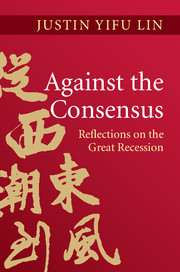Book contents
- Frontmatter
- Contents
- List of figures
- List of tables
- List of boxes
- Preface
- Overview
- Part I What Caused the 2008–9 Global Crisis?
- 1 The world economy and the 2008–9 crisis
- 2 The real causes of the crisis
- 3 Financial deregulation and the housing bubble
- 4 What’s wrong with the Eurozone
- 5 Why China’s reserves have risen so much
- Part II A Win-Win Path to Recovery
- Part III How Poor Countries Can Catch Up: Flying Geese and Leading Dragons
- Part IV Toward a Brave New World Monetary System
- References
- Index
1 - The world economy and the 2008–9 crisis
from Part I - What Caused the 2008–9 Global Crisis?
Published online by Cambridge University Press: 05 June 2013
- Frontmatter
- Contents
- List of figures
- List of tables
- List of boxes
- Preface
- Overview
- Part I What Caused the 2008–9 Global Crisis?
- 1 The world economy and the 2008–9 crisis
- 2 The real causes of the crisis
- 3 Financial deregulation and the housing bubble
- 4 What’s wrong with the Eurozone
- 5 Why China’s reserves have risen so much
- Part II A Win-Win Path to Recovery
- Part III How Poor Countries Can Catch Up: Flying Geese and Leading Dragons
- Part IV Toward a Brave New World Monetary System
- References
- Index
Summary
The world economy grew rapidly between 2000 and 2008. Unemployment and poverty declined as advanced, emerging, and developing economies alike recorded high growth rates. Strong demand for raw materials from fast-growing developing and emerging market economies pushed up commodity prices, to the benefit of resource-rich countries. The world was experiencing a period of widespread euphoria.
The dampening in recent years of the volatility of business cycles in advanced industrial economies also bred optimism about economic prospects and the sustainability of economic growth (Figure 1.1). Recessions were shorter and their impacts milder. For example, the 1987 US stock market crash did not lead to a recession, and the 1990–91 recession was fairly short and shallow. Similarly, the bursting of the dot-com bubble in 2001 resulted in only a mild recession and a sluggish recovery. At the same time, expansions were lasting longer. Some refer to this success in stabilizing the business cycles and ushering in an era of low inflation, high growth, and modest recessions as the “Great Moderation.”
Business and financial deregulation and innovative financial instruments were credited with creating a more flexible and adaptable economic system, enabling the Great Moderation. Financial assets were considered less risky than beforehand, prompting more financial intermediation, which fueled economic growth and spurred financial innovation, especially through hedge funds.
- Type
- Chapter
- Information
- Against the ConsensusReflections on the Great Recession, pp. 5 - 13Publisher: Cambridge University PressPrint publication year: 2013



